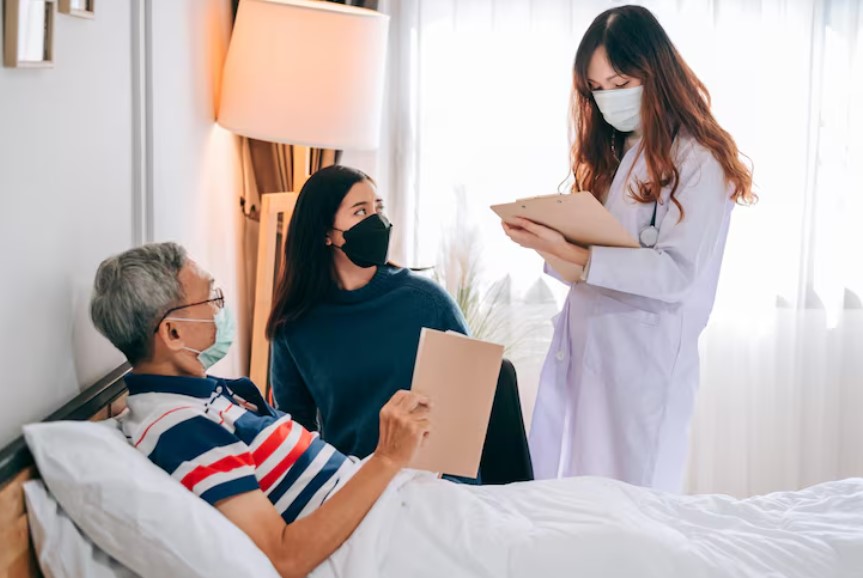17
Sep 2024
Healthcare Costs Set to Rise for Thousands After St Vincent's and NIB Negotiations Fail
Published in News on September 17, 2024

Thousands of patients might see their out-of-pocket healthcare costs increase after talks between St Vincent’s private hospital network and the private health fund, NIB, fell through.
On Thursday, St Vincent’s Health Australia informed NIB that it will terminate their contract in 65 business days unless a more equitable funding agreement is established.
If a new agreement isn't reached by October 3, patients with NIB health insurance may have to pay more for their care at St Vincent’s private hospitals.
St Vincent’s runs 10 private hospitals across New South Wales, Victoria, and Queensland.
Chris Blake, CEO of St Vincent’s, commented, “This is not a decision we take lightly. It’s the first time in our 167-year history that we’ve notified a private health fund of our intention to end our agreement.”
The country’s largest not-for-profit healthcare provider stated it had made every effort to reach an agreement, but NIB did not present a fair offer that addressed the rising costs of private hospital care.
Blake explained that inflation has significantly increased hospital expenses, including wages, food, energy, PPE, IT, and maintenance. For instance, St Vincent’s electricity costs were $6.5 million in 2023, and are expected to reach around $12 million in 2024.
Over the past year, St Vincent’s successfully negotiated new agreements with Medibank, HCF, and the Alliance group of health funds, where both parties made concessions. “However, NIB has left us no choice but to take this step,” Blake said.
St Vincent’s operates 10 private hospitals across New South Wales, Victoria, and Queensland. For patients seeking accommodation near St Vincent’s hospital, there are several options available, including serviced apartments and hotels, to provide comfort and convenience during their stay.
NIB’s CEO and managing director, Mark Fitzgibbon, responded by acknowledging the long-standing partnership with St Vincent’s and expressing sympathy for the financial challenges faced by both St Vincent’s and other private hospitals. Fitzgibbon also stated that NIB had extended a “very fair and reasonable offer” to St Vincent’s.
Fitzgibbon expressed disappointment that the disagreement has become public but noted that discussions will continue, emphasizing that their partnership still has several months left.
The Australian Medical Association (AMA) urged both parties to resume negotiations to reach an agreement in the interest of patients. AMA President, Prof Steve Robson, highlighted that patients are the ones who suffer in these situations, potentially facing higher out-of-pocket costs for care at St Vincent’s private hospitals after October 3.
Robson added, “These disputes erode Australians' confidence in private health insurance, especially as we face significant premium increases and cost-of-living pressures.”
Bassett pointed out that NIB's premium increase this year was one of the highest at 4.1%, while in 2022-23, it only returned 79% of premiums to patients—far below the industry’s gold standard of 90% and the lowest among major insurers.
“Today, St Vincent’s is rightfully standing up against the power and greed of insurers,” Bassett said.
The latest report from the ACCC consumer watchdog revealed that the private health insurance industry’s net profit after tax has more than doubled, reaching $2.19 billion in 2022-23 compared to $1.04 billion in 2021-22.
Bassett noted that 71 private hospital services have closed in the past year due to financial challenges. “Our not-for-profit hospitals are at breaking point, with insurance funding failing to keep up with rising costs for essentials like food, energy, and equipment,” she said.
Blake agreed, describing the situation as indicative of a “crisis in private healthcare in Australia.” He emphasized the need for health funds and hospitals to collaborate effectively and operate on a level playing field for the benefit of patients.
The CHA is advocating for reforms in the annual premium review process and a new funding model, termed the National Private Price, to ensure that funding accurately reflects the actual costs incurred by hospitals.
Meanwhile, the AMA is calling for the establishment of an independent Private Health System Authority (PHSA). According to Robson, this would improve regulation in the sector, help resolve disputes, and ensure patients receive value for their money.








![“Surprise Noises Can Feel Like Pain”: New Airport Rule Eases Travel for Autistic Passengers Emma Beardsley once dreaded going through airport security. “I used to panic every time they made me take my headphones off at security,” she recalls. “The noise and the unpredictability can be overwhelming.” Now, thanks to a new policy allowing noise-cancelling headphones to remain on during security checks, Beardsley says she can “travel more confidently and safely.”
In Australia, one in four people lives with a disability, yet the travel system has often failed to accommodate varied needs. Autism-inclusion advocates at Aspect Autism Friendly have welcomed the government’s updated guidelines that let autistic travellers keep their noise-reducing headphones on during screening, calling it a “major step” toward more accessible air travel.
Dr Tom Tutton, head of Aspect Autism Friendly, emphasises the significance of travel in people’s lives: it connects them with family, supports work and learning, and offers new experiences. But he notes the typical airport environment can be especially intense for autistic travellers:
“Airports are busy, noisy, random and quite confusing places … you’ve got renovations, food courts, blenders, coffee grinders, trolleys clattering … and constant security announcements. It’s really, really overwhelming.”
“What might be an irritation for me is something that would absolutely destroy my colleague [who has autism]. Surprise noises of a certain tone or volume can genuinely be experienced as painful.”
Under the new policy — now published on the Australian Government’s Department of Home Affairs website — passengers who rely on noise-cancelling headphones as a disability support may request to wear them through body scanners. The headphones may undergo secondary inspection instead of being forcibly removed.
Dr Tutton describes this adjustment as small in procedure but huge in impact: it removes a key point of sensory distress at a critical moment in the journey. Aspect Autism Friendly is collaborating with airports to ensure that all security staff are informed of the change.
For many autistic travellers, headphones aren’t just optional — they are essential to navigating loud, unpredictable environments. Until now, being required to remove them during security has caused distress or even deterred travel.
Aspect Autism Friendly also works directly with airports, offering staff training, autism-friendly audits, visual stories, sensory maps, and other accommodations. Their prior collaborations include autism-friendly initiatives with Qantas. Dr Tutton notes:
“Airports have become this big focus for us of trying to make that little bit of travel easier and better.”
He advises people planning trips for travellers with disabilities to consult airport websites ahead of time. Some airports already offer quiet rooms or sensory zones — Adelaide, for instance, provides spaces where travellers can step away from the noise and regroup before boarding.
Beyond helping autistic individuals, Dr Tutton believes that more accessible airports benefit everyone. “These supports help lots of other people too,” he says. “When people are more patient, kind and supportive, the benefits flow to everyone. We all prefer environments that are well-structured, sensory-friendly, predictable and easy to navigate.”](https://c3eeedc15c0611d84c18-6d9497f165d09befa49b878e755ba3c4.ssl.cf4.rackcdn.com/photos/blogs/article-1061-1759742013.jpg)
